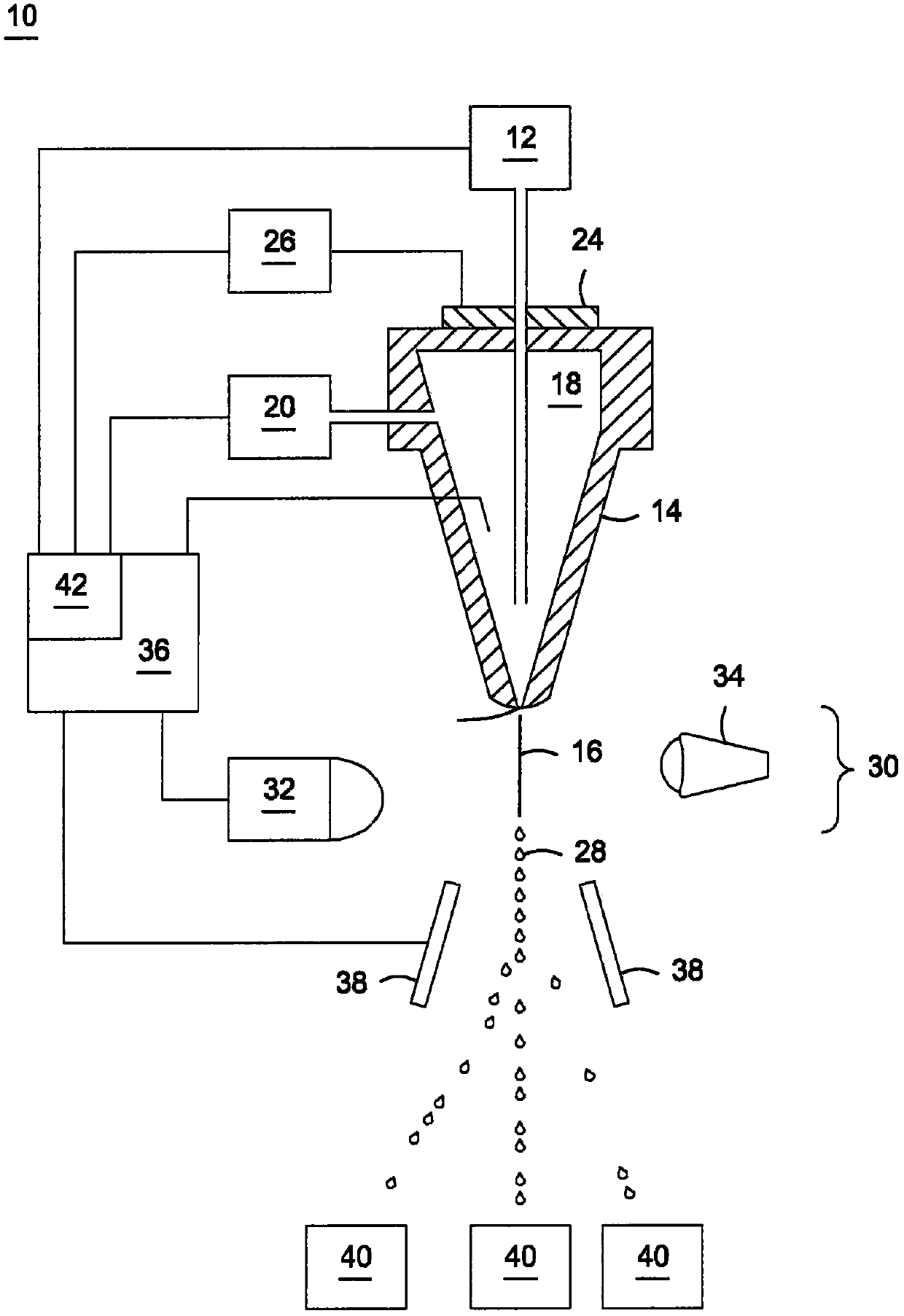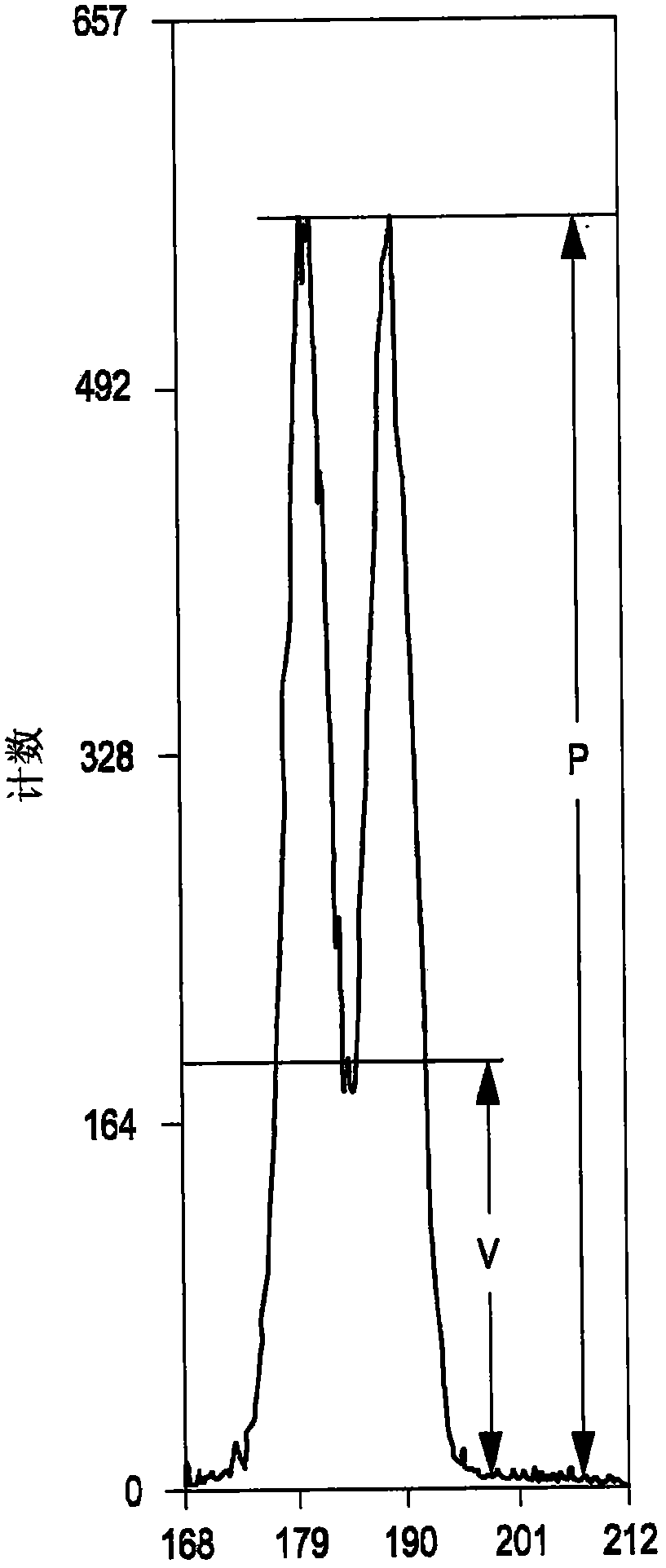Sex-sorted sperm exhibiting a dose response and methods of producing sex-sorted sperm exhibiting a dose response
A dose-response, sperm technology, used in sexual diseases, germ cells, animal cells, etc., can solve the problem that sperm cannot fully compensate for low energy
- Summary
- Abstract
- Description
- Claims
- Application Information
AI Technical Summary
Problems solved by technology
Method used
Image
Examples
Embodiment 1
[0072] collect - Sperm were collected from five different bulls using artificial vaginas according to a routine collection protocol. Each bull was collected two or three times a day. Of the five bulls, two are Jersey bulls and three are Holstein bulls. All ejaculates contained greater than 60% progressive motility, with sperm concentrations ranging from 875 million sperm / ml to 2,480 million sperm / ml. Ejaculates collected from the same bull were pooled and then divided into nine sperm samples for collection and staining.
[0073] Sperm Processing and Staining - Sections of each bull ejaculate were treated and dyed in nine different ways, each of which is described below.
[0074] (A) Control (no normalization, two-step staining) - A control was established that did not include the step of normalizing the collected ejaculate and in which spermatozoa were stained in two steps. Prior to staining, the sperm samples were concentrated to between 1.700 million sperm / ml and 1.80...
Embodiment 2
[0092] collect - Sperm were collected from six different Jersey bulls using artificial vaginas according to a routine collection protocol. All ejaculates contained greater than 65% forward motility, with sperm concentrations ranging from 765 to 1,710 million sperm / ml. Each sperm sample was divided into two portions in 15 mL tubes for two collections and staining processes. pH measurements were taken at collection and at each subsequent processing step.
[0093] Sperm Processing and Staining - For comparison, portions of each bull ejaculate were treated and dyed by two methods.
[0094] Control (no normalization, two-step staining) - A control was created that did not include the step of normalizing the collected ejaculate and in which sperm were stained in two steps. Prior to staining, the sperm samples were concentrated to between 1.700 million sperm / ml and 1.800 million sperm / ml by centrifugation or by addition of tris-egg yolk dilution at pH 6.8, depending on the samp...
Embodiment 3
[0105] collect - Sperm were collected from three different Jersey bulls and three different Holstein bulls according to a routine collection protocol for a total of 17 collections. Each ejecta was split for the two treatments.
[0106] Sperm Processing and Staining - For comparison, portions of each bull ejaculate were treated and dyed by two methods.
[0107] Control (no normalization, two-step staining) - A control was created that did not include the step of normalizing the collected ejaculate and in which sperm were stained in two steps. Sperm in the control group were diluted to 160 × 10 in the modified TALP buffer as described in Table 1 at pH 7.4. 6 sperm / ml. Each sperm sample in the control group was then incubated with 16-17 μL Hoechst 33342 / ml (64-68 μM) of sample for 45 minutes at 34°C. After incubation, an equal volume of the second modified TALP was added, reducing the concentration to 80×10 6 sperm / ml. A second modified TALP included the ingredients desc...
PUM
 Login to View More
Login to View More Abstract
Description
Claims
Application Information
 Login to View More
Login to View More - R&D
- Intellectual Property
- Life Sciences
- Materials
- Tech Scout
- Unparalleled Data Quality
- Higher Quality Content
- 60% Fewer Hallucinations
Browse by: Latest US Patents, China's latest patents, Technical Efficacy Thesaurus, Application Domain, Technology Topic, Popular Technical Reports.
© 2025 PatSnap. All rights reserved.Legal|Privacy policy|Modern Slavery Act Transparency Statement|Sitemap|About US| Contact US: help@patsnap.com



